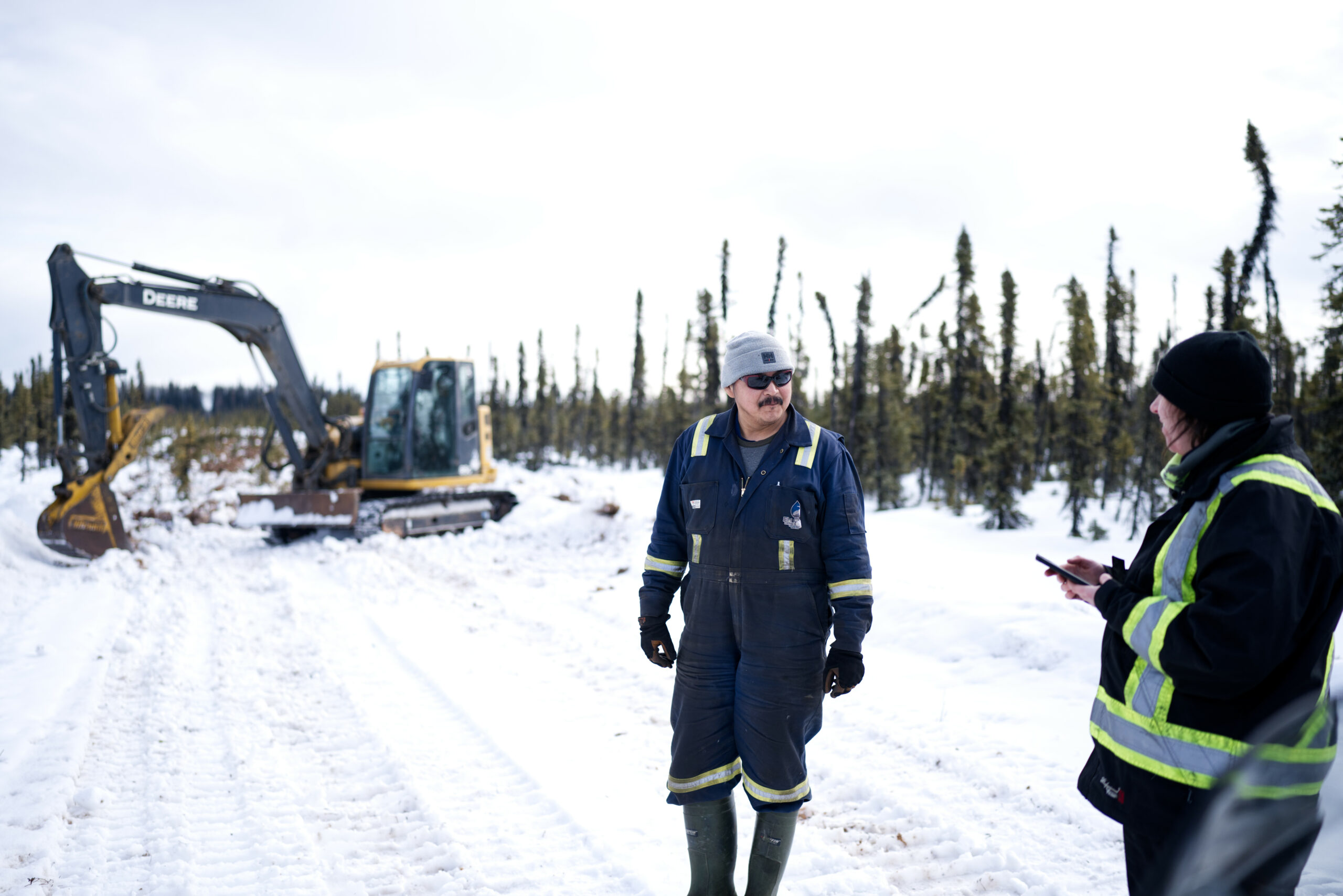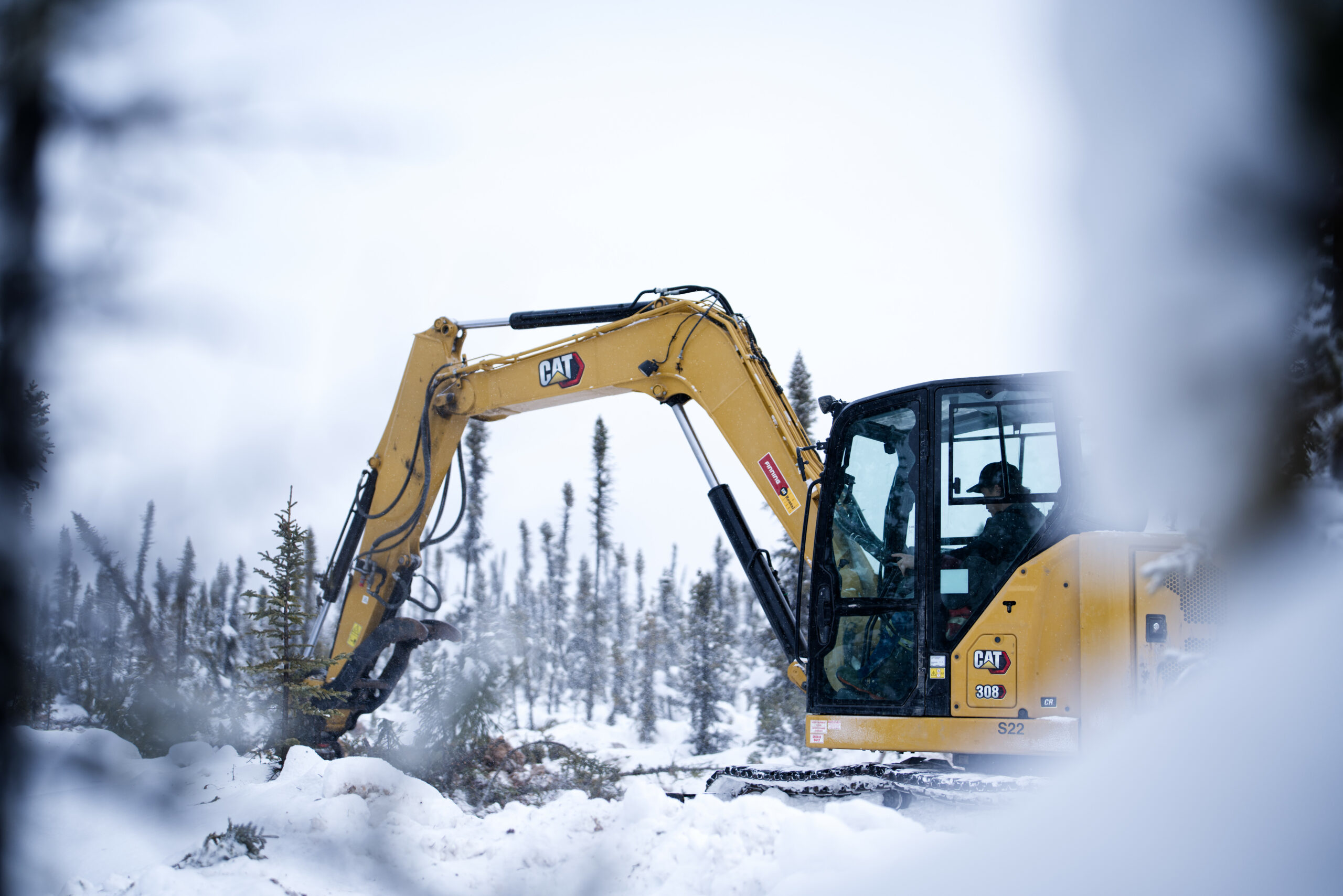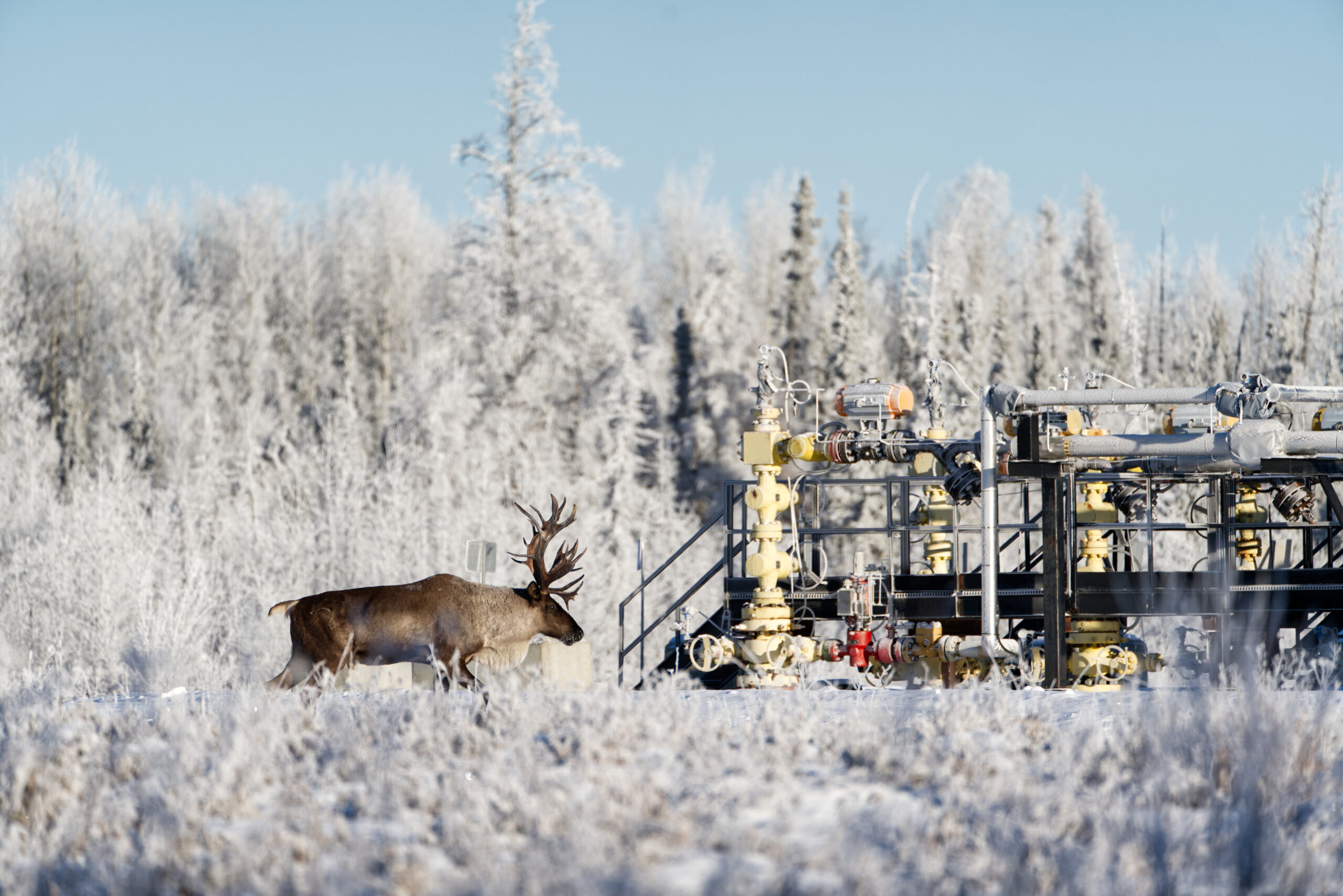
‘Afraid of the water’? Life in a city that dumps billions of litres of raw sewage into lakes and rivers
10 billion litres of sewage are dumped into Winnipeg’s lakes and rivers each year. Some...
Picture an iconic evergreen tree: towering, noble, awe-inspiring. A majestic arrow pointing straight into the sky.
That’s not the black spruce. “They’re not the nice, sexy red cedars or the Doug firs,” Katherine Wolfenden, land and resources manager for Fort Nelson First Nation, says. Black spruce is the awkward, ungainly cousin of the conifer family, a slow-growing species topped by a messy clump of needles. And historically, it’s been viewed as worthless, and there was no restoration required when trees were cut down for oil and gas exploration. “It’s not like forestry where you make a cut block then you plant it,” Wolfenden says. “This was very much like, ‘It’s just black spruce. It’s got no value, just go for it.’ ”
But they’re tough, Wolfenden says. “They’re pretty adaptable. You can literally just scoop up this tree and plunk it down in the ground and it keeps growing.” And the species thrives in the cold, boggy muskeg that blankets Treaty 8 territory in the northeastern corner of the province, an ecosystem few other trees tolerate.


And for the boreal caribou of B.C., more than 80 per cent of whom live in Treaty 8, black spruce forest is home. But decades of oil and gas development have carved up boreal forests, leaving thousands of seismic lines — corridors cleared for exploration and transporting equipment — in their wake. Then there are the pipelines, power lines, trails and roads — for oil and gas, but also for forestry and mining. It all adds up to hundreds of thousands of kilometres of lines cut through the forest.

An unintended consequence of these seismic lines is their allure for wildlife, who find them dangerously convenient for getting around. “If I told you to walk through the bush versus giving you a paved sidewalk, you’re going to take the sidewalk most of the time,” Wolfenden explains. Caribou are drawn to seismic lines, but so are wolves, who prey on them with ease thanks to the long sight-lines made possible by the corridors.
The caribou, called medzih in Dene, have been in relationship with members of Fort Nelson First Nation for thousands of years, providing not only sustenance but also hides for making rope, drums and clothing. But the nation voluntarily stopped hunting medzih in the 1980s, implementing a moratorium when community members noticed the animals were becoming scarce. Today, boreal caribou are listed as a threatened species in Canada.
In 2017, Fort Nelson First Nation began looking at how to restore and protect their habitat to help medzih recover their numbers. To do that, Wolfenden explains, they need to turn the “paved sidewalks” created by the seismic lines back into wilderness. “It’s just trying to force everything back into a little bit more of a natural rhythm and movement pattern.” One black spruce at a time, they’re healing the ravaged landscape — and giving medzih a chance to thrive again.

The First Nation received initial funding in 2017 from the Habitat Conservation Trust Fund, a non-profit organization that funds conservation and restoration projects in British Columbia. “That money was to look at prioritization of the landscape, and where to start restoration. Because there’s so much disturbance up here, it really becomes a question of where and how to start, because it can be overwhelming,” Wolfenden says.
There are thousands of seismic lines, not all of which are mapped, in various states of recovery. “Some lines restore themselves,” she says. “But others … I’ve stood on lines built in the 1950s, and they’ll forever look that way.”

According to the BC Energy Regulator, there are an estimated 517,000 kilometres of seismic lines in British Columbia, primarily located in the northeast region of the province. By email, the regulator told The Narwhal older surveying methods, used to clear approximately 215,000 kilometres of these lines, yielded wider corridors that caused more disruption to the environment. In comparison, contemporary surveying “renders more lines per se, but tends to have a lower impact footprint on the land.” The regulator added it is partnering with Treaty 8 First Nations on “various initiatives to restore former oil and gas industry sites to their natural state.”
Interviews with community members, who identified areas of cultural importance, also informed the restoration planning.
In 2019, after identifying priority areas, the nation received additional support from the Habitat Conservation Trust Foundation and other funders to begin restoration work near Kotcho Lake. Using a mini-excavator, they trialled a process of transplanting hummocks — chunks of earth, black spruce rising from the mound, scooped up and deposited on seismic lines.




Because black spruce trees are so hardy, they can also be tilted and repositioned. For wide seismic lines and winter access roads, Wolfenden says the trees are tipped using a mini-excavator until they bow low to the ground. “If you keep the bottom still intact, you simulate like a wind throw,” Wolfenden explains. “And they’ll keep growing. So they’ll produce a bunch of cones and drop all the seeds down on the line.”
The trees responded well to the first year of transplanting. Then the provincial government offered funding to the nation to try restoration activities in the winter, when the land was frozen. “Up here everything is traditionally winter access,” Wolfenden explains. “Everything’s frozen generally, so it’s pretty easy to get onto.” Working with frozen ground allowed them to use heavier excavators, which could transplant larger hummocks.

Now the restoration work is in its fifth year, and the nation has settled into a rhythm. When the snow arrives and the muskeg freezes solid, usually in mid-December, the work begins. “We’re busy,” Wolfenden says. “Like six to seven days a week. Honestly, sometimes I’ll just switch out the operators and keep going.” They transplant trees until March 31, covering as much ground as they can.
But the changing climate has complicated the process. This year, the nation had planned a 22-day fall restoration season, but northern B.C. was ravaged by wildfires and thick smoke choked the landscape.
And as of December 5, when Wolfenden spoke to The Narwhal, there was barely any snow on the ground — unusually light compared to the expected snowfall for this time of year, which meant they needed to adjust their plans and wait for more to accumulate.
Each year, Wolfenden asks herself, “ ‘Can we double what we’re doing? How far can I push capacity every year? What’s in the realm of the realistic?’ Because there are thousands of kilometres that need to be restored.”
In the past three years, Fort Nelson First Nation has restored 88 kilometres of seismic lines and planted 34 kilometres of trees. Last year, Wolfenden says, they planted 65,000 black spruce seedlings.
The restoration work benefits the community as well as the caribou, even as they wait for the population to rebound. “Fort Nelson’s very economically depressed and it’s not good times living here,” Wolfenden says. She hopes to build the restoration economy and create meaningful year-round jobs for the nation. “That’s a big goal, to build up that local capacity, and to involve band members in the work.”

The restoration work relies on a blend of western and Indigenous science. “We go back to a number of sites each year and check the hummock growth and the tree growth,” Wolfenden says. A moisture-reading tool allowed the team to evaluate how the transplanted hummocks were faring, in comparison to control plots in the forest — just one of many tools used to collect data for the project.
“For a while there, we were right in the weeds of counting moss and stuff like that,” Wolfenden says, laughing. “And then we kind of dialed it back and went, ‘Oh, we can make this simpler and more straightforward.’ ”


They also rely heavily on the knowledge of community members, who know the land intimately. “Members say if the animals aren’t using a certain area, and they used to before, then something’s not right. Just having that relationship and knowing what should be there and what shouldn’t be.”
“The first year we came back and looked at things and I was sick to my stomach, because everything looked so bad,” Wolfenden recalls. “I was like, ‘Oh my god, I just wasted all this money. All this stuff is dead. What a horrible idea.’ And then we came back in year two, after a full growing season, and it was like — the moss had come back to life, the trees were growing. You need to let nature just sit for a little bit. Because if we had changed our plans based on year one, we wouldn’t be doing anything. It looked so bad, everything just looked like these dry piles of horse poop.”

While caribou are the focus of the restoration plan, the work itself is connected to the larger conservation initiatives of the nation. “There’s the Guardians program that the nation runs, we have a water-monitoring program — it’s all interconnected. I think that’s what makes it a truly Indigenous-created and led program,” Wolfenden says. “In western science, people are only looking at soil or water … but you have to have a holistic view on it or it doesn’t make sense for the land.”
Some members of Fort Nelson First Nation still remember hunting caribou, when they might have harvested four or five animals each winter to feed a family of five. But many others have never seen a caribou hunt in their lifetime. “What happens to a community, when you’re not harvesting and you’re not interacting with an animal in that way, that relationship starts to fade,” Wolfenden says. “So people really love seeing them. We don’t see them that often, honestly. So it would be nice, hopefully, to get the population back up to a harvestable number.”

Wolfenden isn’t sure how far the nation is from that number, but is trying to find out. In partnership with the B.C. government, the nation is collecting caribou pellets to analyze their DNA, which offers a non-intrusive method of estimating the population. It’s something Wolfenden would have never thought of when the restoration work first began in 2017, but she’s learned to embrace new approaches.
“That flexibility and adaptability is so key to this, because it’s not just going to be restoration, it’s not just going to be predator management, and it’s not just going to be policy,” she says. “It’s going to unfortunately take a bunch of tools to fix the disaster that is the land right now.”
Wolfenden says the homelands of Fort Nelson First Nation were some of the first to be transformed by the oil and gas industry, and now they’re leading the way in restoration work.

Sharing what they’ve learned with other First Nations who are embarking on their own restoration initiatives is a priority, Wolfenden says. “We had to learn a lot of things the wrong way, or the hard way. So we’ve created a kind of toolkit for other First Nations so they can get started.”
“It’s overwhelming, but also not really,” she says. After all, the work itself is simple: “Take black spruce from the bush and put it on the line. Then you repeat that hundreds of thousands of times. And you hope that it’s gonna slow down the wolves, and bring a little bit more of balance back.”
